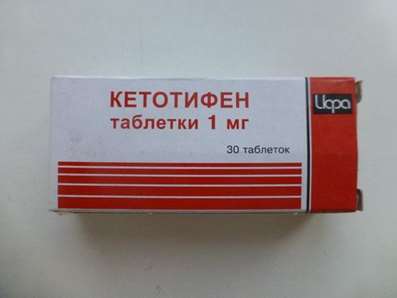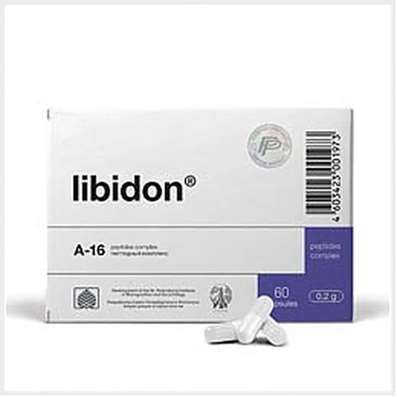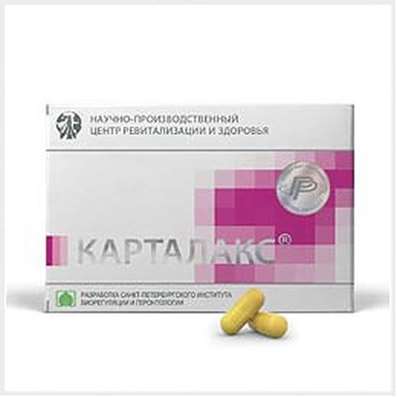Instruction for use: Pulmicort
I want this, give me price
ATX Code R03BA02 Budesonide
Active substance: Budesonide
Pharmacological group
Glucocorticosteroid for topical use [Glucocorticosteroids]
Nosological classification (ICD-10)
J44.9 Chronic obstructive pulmonary disease, unspecified
Obstructive pulmonary diseases, Bronchial obstruction, bronchial obstruction, Exacerbation of chronic obstructive pulmonary disease, reversible airflow obstruction, Reversible airway obstruction, panbronchiolitis, Panbronhit, COPD, Chronic pulmonary infection, Chronic infection of the lower respiratory tract, Chronic obstructive pulmonary disease, Chronic obstructive pneumonia, Chronic lung disease, Chronic obstructive pulmonary disease, Chronic bronchopulmonary disease, Chronic broncho-pulmonary diseases, Airway obstruction
J45 Asthma
Asthma physical effort, status asthmaticus, Bronchial asthma, Asthma lung flow, Bronchial asthma with obstruction of sputum discharge, Bronchial asthma heavy currents, Bronchial asthma physical effort, hypersecretory asthma, Hormone-dependent form of bronchial asthma, Relief of asthma attacks in bronchial asthma, Non-allergic asthma, nocturnal asthma, Exacerbation of asthma, Asthma attacks, Endogenous forms of asthma, Night asthma, Cough with bronchial asthma
Composition
Powder for inhalation dosed 1 dose
active substance:
Budesonide 100 μg
200 μg
Description of dosage form
A plastic inhaler, for 100 mcg / dose - a rotating part of the light-brown inhaler, on the underside it is squeezed out "BUDESONIDE 100"; For 200 mcg / dose - the rotating part of the inhaler is brown, on the underside it is squeezed out "BUDESONIDE 200". The inhaler contains round granules from white to almost white, easily breakable at the slightest mechanical impact. An insignificant part of the substance can be present in the form of a powder.
pharmachologic effect
Pharmacological action - anti-inflammatory, antiallergic, glucocorticoid.
Indications
A bronchial asthma requiring maintenance therapy for SCS to control the inflammatory process;
Chronic obstructive pulmonary disease (COPD).
Contraindications
Hypersensitivity to budesonide;
Children's age till 6 years.
With caution: when treating inhaled GCS patients with active or inactive forms of pulmonary tuberculosis, fungal, viral or bacterial infections of the respiratory system.
pregnancy and lactation
While receiving pregnant women, budesonide has not been shown to increase the risk of developmental abnormalities in the fetus, however, the risk of their development can not be completely ruled out, therefore, during pregnancy, the minimum effective dose of budesonide should be used, without forgetting the possibility of worsening of the course of bronchial asthma.
The results of animal studies have shown that SCS can cause abnormalities in fetal development, but these data can not be extrapolated to people receiving SCS at the recommended doses.
There is no data on the occurrence of budesonide in breast milk. When prescribing the drug should take into account the ratio of expected benefits for the mother and the potential risk to the child.
Side effects
Up to 10% of patients taking the drug may experience the following side effects:
Frequent (> 1/100)
On the part of the respiratory tract: candidiasis of the oropharynx, irritation of the mucous pharynx, cough, hoarseness of the voice.
Rare (<1/1000)
General: angioedema.
From the skin: urticaria, rash, contact dermatitis.
From the respiratory tract: bronchospasm.
There may also be neuropsychiatric symptoms such as nervousness, excitability, depression, and behavioral disorders. Taking into account the risk of developing candidiasis of the oropharynx, the patient should rinse the mouth thoroughly with water after each inhalation of the drug.
In rare cases, symptoms can occur due to systemic effects of SCS, including adrenal hypofunction.
In rare cases, the appearance of bruises on the skin.
Dosing and Administration
Inhalation. The dose is selected individually. The recommended doses of the drug in the case of the onset of inhaled glucocorticoid therapy during severe exacerbations of bronchial asthma, as well as against a dose reduction or withdrawal of oral GCS, are as follows:
Children over 6 years of age - 100-800 mcg / day (the total daily dose can be divided into 2-4 inhalations). If the recommended dose does not exceed 400 mcg / day, the entire dose of the drug can be taken for 1 time (one time).
In children, the transition to a single dose should be performed under the supervision of a pediatrician.
Adults - the usual dose is 200-800 mcg / day (the total daily dose can be divided into 2-4 inhalations). For the treatment of severe exacerbation of bronchial asthma, the daily dose can be increased to 1600 μg.
If the recommended dose does not exceed 400 mcg / day, the entire dose of the drug can be taken for 1 time (one time).
When selecting a maintenance dose, it is necessary to strive to prescribe the minimum effective dose.
The time to start the therapeutic effect after inhalation of 1 dose is several hours. The maximum therapeutic effect is achieved 1-2 weeks after treatment. Pulmicort® Turbuhaler® has a preventive effect on the course of bronchial asthma and does not affect the acute manifestations of the disease.
The best efficacy of budesonide was demonstrated when using Turbuhaler® as compared to a similar dose of budesonide in the form of a dosed aerosol. In the case of a patient in a stable condition with Pulmicort® in aerosol form on Pulmicort® Turbuhaler®, a reduction in the daily dose of budesonide should be considered.
To enhance the therapeutic effect, an increase in the daily dose of Pulmicort® Turbuhaler® instead of the combination of the drug with oral GCS may be recommended, due to a lower risk of systemic effects.
Patients receiving oral GCS (glucocorticosteroids)
The abolition of oral glucocorticosteroids (glucocorticosteroids) should be performed against a background of stable patient health. Within 10 days, it is recommended to take a high dose of Pulmicort® against oral glucocorticosteroids in a selected dose. In the future, the dose of oral GCS should be gradually reduced (for example, 2.5 mg prednisolone or its analogue) to the lowest possible level. In many cases, it is possible to completely refuse the use of oral GCS.
There is no data on the use of budesonide in patients with renal insufficiency or liver dysfunction. Taking into account budesonide excretion due to biotransformation in the liver, an increase in the duration of action of the drug in patients with severe hepatic cirrhosis can be expected.
Overdose
In case of an overdose of Pulmicort® Turbuhaler® in doses much higher than recommended, there are no clinical manifestations. With prolonged use of the drug in doses much higher than recommended, a systemic glucocorticosteroid effect may develop in the form of hypercorticism and suppression of adrenal function.
special instructions
To minimize the risk of fungal oropharyngeal injury, the patient should be instructed to rinse the mouth thoroughly with water after each inhalation of the drug.
Joint use of budesonide with ketoconazole, itraconazole, or other potential inhibitors of CYP3A4 should be avoided. In the event that budesonide and ketoconazole or itraconazole or other potential inhibitors of CYP3A4 have been prescribed, the time between taking the drugs to the maximum possible should be increased.
Because of the possible risk of weakening the pituitary-adrenal function, special attention should be given to patients who are transferred from oral GCS to Pulmicort®. Also, special attention should be given to patients taking high doses of GCS, or long received the highest recommended doses of inhaled glucocorticosteroids. In stressful situations, such patients may show signs and symptoms of adrenal insufficiency. When stress or in cases of surgical intervention, additional therapy with systemic SCS is recommended.
Particular attention should be paid to patients who are transferred from systemic to inhaled glucocorticosteroids (Pulmicort® Turbuhaler®), or in the event that a pituitary-adrenal function disorder can be expected. In such patients, it is necessary to reduce the dose of systemic SCS with special care and monitor the hormonal function of the adrenal glands. Patients may also require the administration of oral GCS during periods of stressful situations, such as trauma, surgery, etc.
When switching from oral GCS to Pulmicort® Turbuhaler®, patients may experience such previously observed symptoms as muscle aches or joint pain. In such cases, a temporary increase in the dose of oral GCS may be necessary. In rare cases, symptoms such as a feeling of fatigue, headache, nausea and vomiting, indicating a systemic failure of the GCS, can be observed.
Replacement of oral glucocorticosteroids by inhalation sometimes results in the manifestation of an existing allergy (eg, rhinitis and eczema) that were previously treated with systemic drugs.
In children and adolescents receiving treatment with GCS (regardless of the method of delivery) for an extended period, it is recommended that growth indicators be regularly monitored.
Patients should be instructed about the need to consult a physician in the event of a decrease in the effectiveness of therapy with short-acting bronchodilators, tk. An independent increase in the frequency of use of the drug may lead to a delay in the appointment of adequate treatment. In case of sudden deterioration of the condition, consideration should be given to the possibility of conducting a course of treatment with oral GCS.
Influence on the ability to drive a car or other machinery. Pulmicort® Turbuhaler® does not affect the ability to drive a car or other machinery.
Instructions
The drug contained in the Turbuhaler® enters the patient's airways along with the air streams when performing an active inspiration through the turbuhaler® mouthpiece.
Caution: It is important to convince the patient to carefully read the instructions for using Pulmicort® Turbuhaler®.
To be sure that the optimal dose of the drug has entered the lungs, you need to take a deep and deep breath through the Turbuhaler® mouthpiece.
Under no circumstances do not exhale through the mouthpiece.
After inhalation of the required dose of the drug, rinse the mouth with water in order to minimize the risk of fungal infection of the oropharynx.
How to use Pulmicort® Turbuhaler®
Turbuhaler® is a multi-dose inhaler that allows you to dose and inhale the drug in very small doses. When the patient inhales, the powder from Turbuhaler® is delivered to the lungs. Therefore, it is important that the patient takes a deep and deep breath through the mouthpiece.
Turbuhaler® is very easy to use. Just follow the instructions below:
1. Unscrew and remove the cap.
2. Hold the inhaler vertically, with the dispenser down. Load the dose into the inhaler by turning the dispenser counter-clockwise until it stops, and then turn the dispenser to its original position until it clicks.
3. Exhale. Do not exhale through the mouthpiece. Before exhaling, remove the inhaler from the mouth.
4. Gently squeeze the mouthpiece with your teeth, squeeze your lips and inhale deeply and strongly through your mouth. The mouthpiece can not be chewed and clenched with teeth.
If inhalation of more than one dose is required, repeat steps 2-5.
5. Close the inhaler cap.
6. Rinse out mouth with water.
IMPORTANT!
Never exhale through the mouthpiece. Always close the inhaler cap tightly after use.
Since the amount of inhaled powder is very small, the patient may not feel the taste of the powder after inhalation. However, if he followed the instructions, he can be sure that he inhaled the necessary dose of the drug.
Cleaning
Regularly (once a week), you should clean the mouthpiece from the outside with a dry cloth.
Do not use water or other liquids to clean the mouthpiece.
How do you know that the inhaler is empty?
The appearance of a red mark in the dose window means that approximately 20 doses remain in the inhaler. The inhaler is empty when the red mark reaches the bottom edge of the indicator dose window.
The sound that is heard when the inhaler is shaken is produced by a dehumidifying agent, not a medicine.
Form of issue
Powder for inhalation dosed, 100 mcg / dose and 200 mcg / dose. 200 doses (for a dosage of 100 mcg / dose), 100 or 200 doses (for a dosage of 200 mcg / dose) in a plastic inhaler consisting of a metering device, a powder storage tank, a desiccant tank, a mouthpiece and a screw cap. 1 inhaler in a cardboard box.
Terms of leave from pharmacies
On prescription.
Storage conditions
At temperatures below 30 ° C.
Keep out of the reach of children.
Shelf life
2 years.
Do not use after the expiry date printed on the package.

 Cart
Cart





